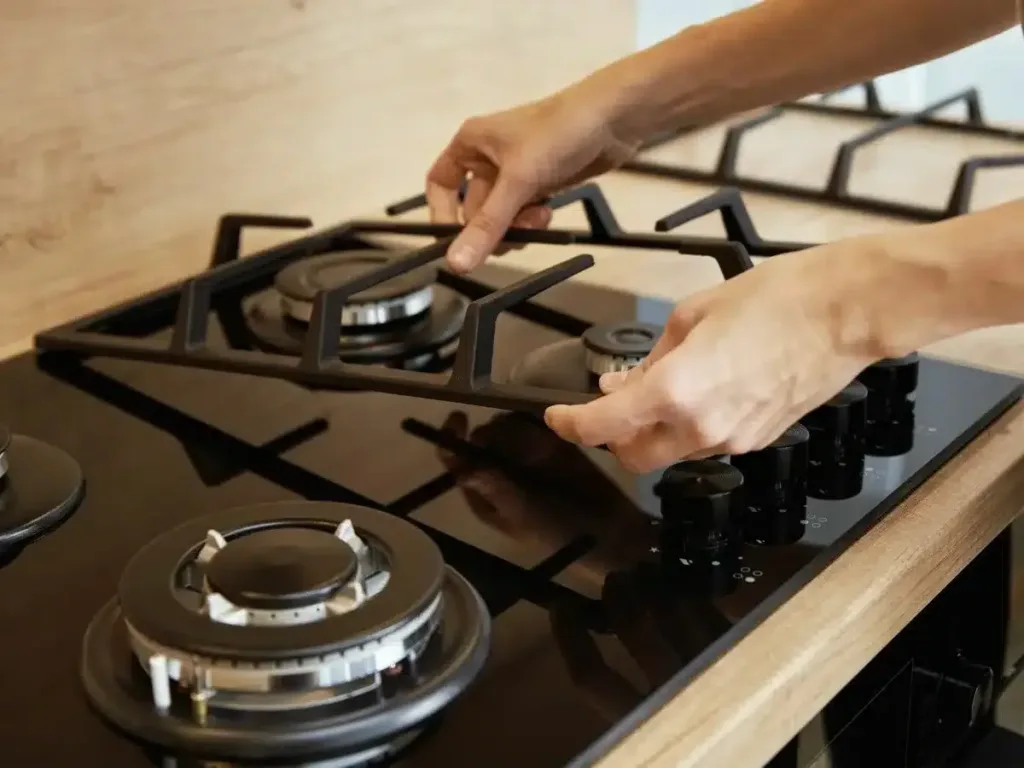
Natural gas is a convenient and efficient fuel source for many homes, particularly for cooking. However, gas is also highly flammable and can pose a significant danger if not handled safely. Therefore prioritizing gas safety in your home is of absolute importance.
Why Gas Safety is Critical
Leaked gas can accumulate within your home and lead to the following:
- Explosions and Fires: An errant spark or open flame can ignite leaking gas, which will cause explosions that can cause property damage, serious injuries, or even fatalities.
- Carbon Monoxide Poisoning: Incomplete combustion of natural gas can produce carbon monoxide (CO). This odorless, colorless gas is highly toxic, and prolonged exposure can lead to health problems or even death.
Potential Risks of Gas Leaks
Gas leaks can occur in various parts of your gas stove system:
- Connections: Loose or damaged fittings on gas lines, valves, or connection hoses can create points for gas to escape.
- Burners: Clogged or malfunctioning burners can cause improper combustion, leading to gas leaks.
- Internal Components: Faulty regulators or worn-out seals within the stove’s internal parts can also cause gas to leak.
Importance of Regular Checks
Regularly checking for gas leaks is the cornerstone of maintaining a safe gas system in your home. Detecting leaks promptly will allow you to take immediate corrective measures, minimizing the risk of serious incidents.
Signs of a Gas Leak
There are several warning signs that may indicate a gas leak in your home:
Recognizing the Smell of Gas: Natural gas is odorless, but utility companies add mercaptan to impart a ‘rotten egg’ or sulfurous smell. This unmistakable scent is the most reliable indicator of a potential gas leak.
Hissing Sounds: If you hear a faint hissing or whistling sound near your stove or gas lines, it could be escaping gas.
Dead or Dying Plants: Plants near a gas leak may wilt, have discolored leaves, or die because gas can displace oxygen in the soil.
Physical Symptoms: Exposure to natural gas can trigger headaches, dizziness, nausea, fatigue, and breathing difficulties. If you experience these symptoms and suspect a leak, take action immediately.
Steps to Check for Gas Leaks
Turn Off the Gas Supply: The first step is to immediately turn off the main gas supply valve to your stove. This will cut off the flow of gas and prevent the leak from worsening.
Soapy Water Test: Create a mixture of dish soap and water. Apply this soapy solution generously to suspected leak areas such as connections, hoses, and around burner knobs. If a leak is present, you’ll see bubbles forming.
Using a Gas Leak Detector: For greater accuracy, invest in a handheld gas leak detector. These devices are highly sensitive and can detect even trace levels of gas.
Professional Inspection: If you are unable to pinpoint the leak’s source or are concerned about the severity, call a qualified gas technician or plumber immediately.
Preventive Measures for Gas Safety
Regular Maintenance: Schedule annual gas appliance inspections with a licensed professional. They can identify potential problems early on.
Installing Carbon Monoxide Detectors: CO detectors offer protection against leaks that might not be immediately detectable through smell. Place them near gas appliances and sleeping areas.
Educating Household Members: Make sure everyone in your household knows how to identify gas leaks, turn off gas appliances and the main gas supply, and what to do in an emergency.
What to Do in Case of a Gas Leak
Evacuation Procedures: If you smell gas or confirm a leak, get yourself and your loved ones out of your home immediately. Do not operate light switches, appliances, or phones, as they could generate a spark.
Contacting Emergency Services: Call the emergency services or your gas company from a safe location outside your home.
Ventilating the Area: Open windows and doors to air out your home, but only if it’s safe to do so.
Additional Safety Tips
Aside from leak detection and handling emergencies, it’s wise to adopt some safety practices:
Avoid DIY Repairs: Unless you are a qualified gas technician, never attempt to repair gas appliances or fixtures yourself. Incorrect repairs can significantly increase safety risks.
Keep Flammables Away: Ensure that flammable materials such as cleaning products, aerosols, and fabrics are stored at a safe distance from your gas stove and any other gas appliances.
Proper Ventilation: Always cook with your stove’s exhaust hood running, and keep the kitchen well-ventilated to get rid of any gas that might escape due to incomplete combustion.
Conclusion: Prioritizing Gas Safety in Your Home
Gas safety is an ongoing responsibility, not a one-time task. By understanding the signs of leaks, conducting regular checks, employing prevention strategies, and knowing how to react in emergencies, you can significantly reduce the risks associated with gas appliances.
Remember, taking a proactive approach to gas safety is an essential part of ensuring a secure and comfortable home environment.

